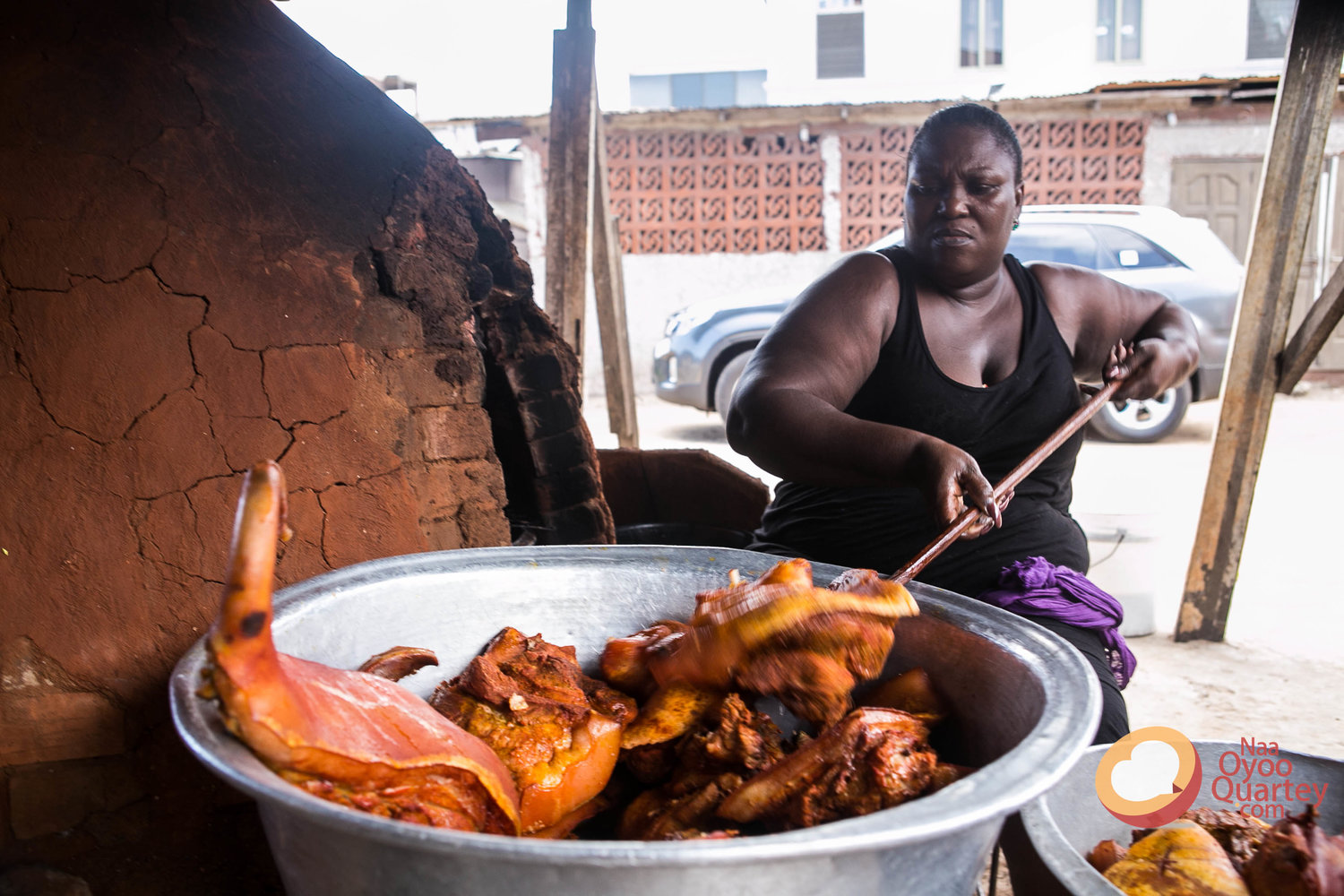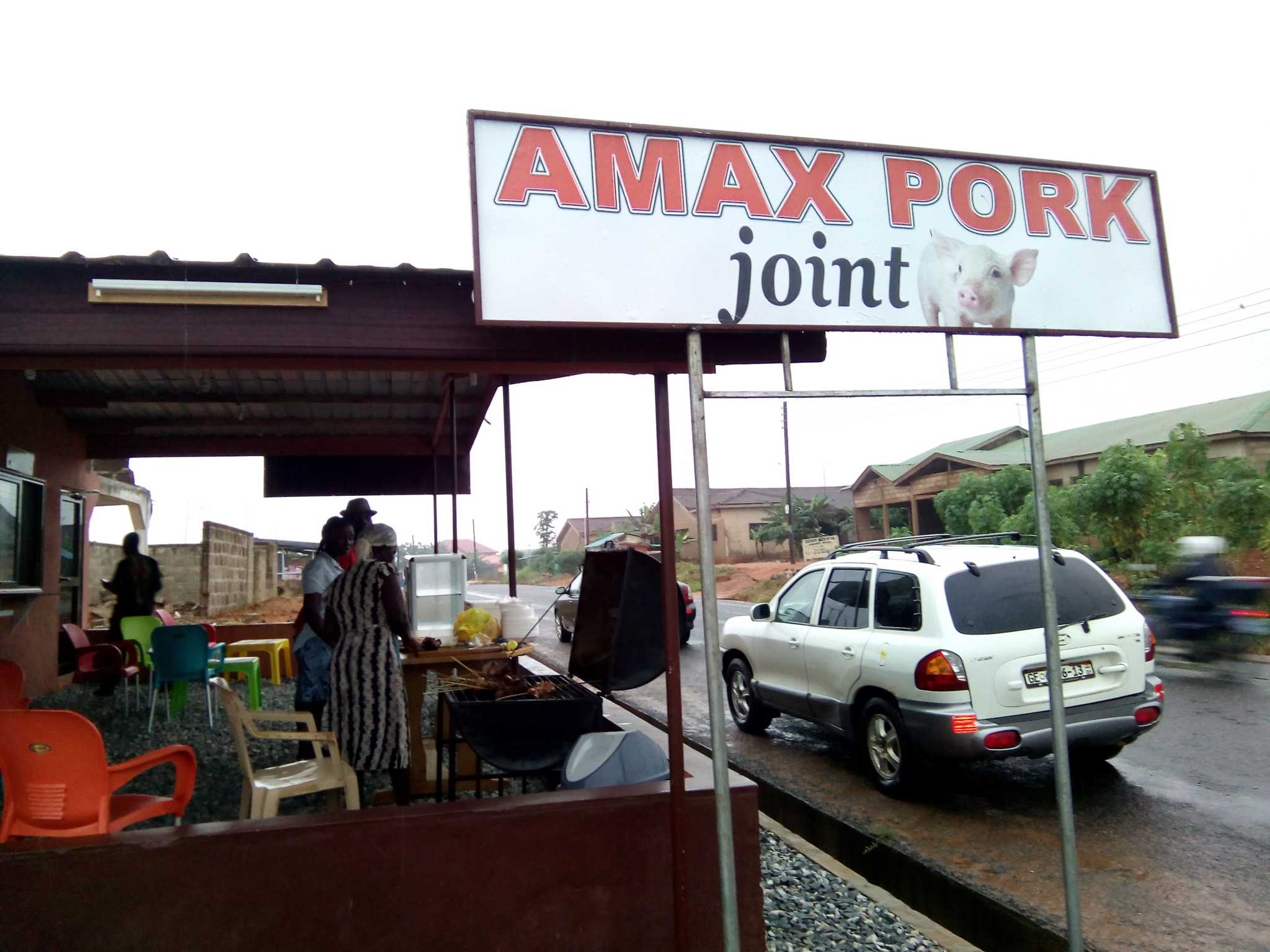For many years Dakwodwom, a suburb of Kumasi, used to be the only hub for pork-selling business in the Metropolis.
Forty-year-old Maame Yaa’s pork shed used to have a long-winding queue. She is one of the oldest pork sellers in the Dakwodom pork enclave.
Maame Yaa says her business has picked even further as earlier misconceptions about pork wane.
ALSO READ: Don’t date one man – Gospel musician advises
Religious beliefs and misinformation about supposed health complications to consuming the animal and its by-product were hindering her sales.
But perhaps economic dynamism, changes in people’s tastes and preferences have breathed a new life into her business.
“People really buy the pork because it is cheap, as low as GHS5, one can buy a piece of it and consume”, Maame Yaa explains.
She has expanded her business, setting up a new shed to sell only pork, while she does other businesses on the side.
ALSO READ: 191 emergency access to Police introduced
At various bars and restaurants, it has become a common scene to see people order pork and drinks only.
Parties and events such as funerals feature pork on the list of meats served.
The business has grown with pockets of what is popularly called ‘pork joints’ springing up almost everywhere.
Twenty-four-year-old Ama Dufie is a senior high school graduate. After trying different businesses without success she ended up in the pork business.
At Tech Junction in Kumasi, she has opened her own pork joint.
ALSO READ: New Military Cemetery Outdoored
“Since I started this job, life has been good,” she said.
This increase in pork business means that pig farming is becoming lucrative because its production and demand must go up.
Also located on the Santasi road in Kumasi, is Santinos Farm, a piggery with over six hundred pigs. It is owned by Kwasi Ntim.
The Biochemists turned farmer, is practising the farm-to-table concept in pork production.
He kills between 40 and 50 pigs in a week for processing and consumption.
Pigs from his farm are grown within a scientific based medium that makes it edible and profitable.
“With our methods, within six months they should weigh 100 kilos and ready for sale. If farmers stay within the scientific tenets of doing the pork business they will make money,” he advised.
One feature seen in most pig styes are their unclean state.

Mr Ntim, therefore, uses a system where pipes that supply water to the pigs are cabled beneath the structure and opens in the walls.
Water only drips when the pigs push the button on the outlet to release the water supply.
“We have changed our styes because we want to keep the structure neat and clean.”

According to him, many out-grower farmers in Kumasi have been taught the technology of growing pigs.
At Kubease, some miles away from Kumasi, Paul Akutcha manages a piggery as an alternative to his poultry farm which is not doing well.
Mr Akutcha is excited pig farming has saved his dying poultry business.
“For the birds, it is difficult to identify if one is sick because they are many. You only get to know most of the time when the sickness become big and spread.”
According to him, individual pigs get the needed attention so when there is a problem it is easily identified and treated.
He started with ten female piglets and now has 200 pigs in eight months.
“The business is good as compared to the poultry farm; the cost of feeding is the problem. I spend more than I do on the poultry farm.
“So I use the by-product from the poultry, soya, wheat bran, maize, some eggs, are used to feed the animals”.
Mr Akutcha is excited there is ready-market and buyers want it in bulk between 50 to 80 pigs at a go.
“If yours is not to that quantity it will take some time before you can sell it. Those buying are from Kumasi; we consulted some Chinese who say they want 50 and above before they buy, and they come with trucks,” he explains.
Because the pigs are sold depending on their sizes, they are sold per kilo. A Kilo is sold between GHS8 and GHS10.
“It is good money and the risk is not too much,” he said.
One put-off about the pork business though is how dirty the animals are when being reared.
But Mr. Ntim explains injecting science into pig production is the key to addressing the challenge for commercial production.
“I have gone to farms and farmers are not feeding the pigs the right way. Pigs are mono-gastric which require certain basic protein, vitamin and carbohydrate needs that have to be met, you can’t give him certain cassava and plantain waste and expect to make money,” he said.
For him, “You must compile the feed scientifically based on maize which is carbohydrate-based, soya bean which is protein-based and vitamin, and it works well”.
Another concern for many is the kind of food that pigs consume due to the free range style of rearing the animal by many.
“Farmers like me are feeding our pigs with soya bean and maize; so many ruminants consume it too, it debunks all these mystifying thoughts about pork”, Mr Ntim said.
According to a BBC report in January 2018, researchers who analysed more than 1,000 raw foods found that pork fat is among the top ten foods which provide the best balance for a person’s daily nutritional requirements.
Also, a research first published in 2015 by a group of scientists revealed that pork fat was ranked 8th in a list of 100 foods.
The development obviously holds some potential for reducing the unemployment rate in the country and encouraging many to want to eat the meat.



